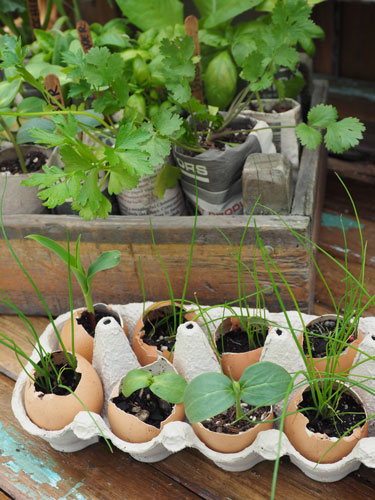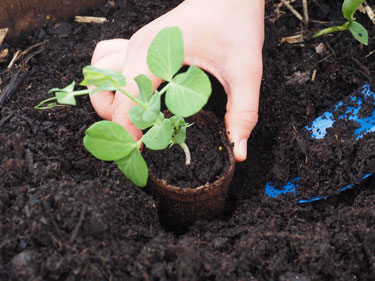Kids Go Gardening - like magic!
Spring time is seed time!
Almost any container can be a place to grow seeds, as long as it has space for seed raising mix and holes for water to drain through. Try making your own biodegradable seed pots from newspaper, empty toilet rolls or eggshells.
This way, when it’s time to plant your seedlings outdoors, you can pop them into the soil - pot and all. Easy as! Plus, everything goes back into the earth, because biodegradable pots turn to compost as the plant roots grow out into the soil.
Nature’s little seed pots
Give eggshells a second life as cute eco-friendly seed pots. Fill them with seed raising mix and get sowing. For big seeds like peas, beans and pumpkins one seed per eggshell is enough. For tiny seeds such as chives, cress or micro-greens use your fingers to sprinkle a pinch of seeds into each shell. (Read the instructions on your seed packet.)
An eggshell is semipermeable, which means air and water can move slowly through its pores. But take care not to overwater.
When your seedlings have grown, gently crack the shell a bit more, remove a few bits of shell from the bottom and pop them into the soil, shell and all. The eggshell will slowly decompose in the soil, feeding nutrients to your plants.
The egg carton makes a prefect stand for the seedlings while they grow, and can then be ripped up for the worm farm or compost heap.
Did you know? Egg shells contain nutrients for plants, including calcium, nitrogen and phosphorus. Save, dry and crush them up for your garden. The crushed eggshells will aerate your soil and feed your plants. A sprinkling of eggshells helps keep slugs and snails away from plants. Cats too!
Seeds come in all sizes and shapes, some are big like a pumpkin or a bean seeds. Some are very tiny, like dust. Get your magnifying glass out and look closely at seeds. Check out their amazing shapes and textures. Can you guess which ones nature has designed to float on water or blow in the wind? Or catch a ride with birds?
Some like it hot! Summer veges like tomatoes, peppers, beans, corn, cucumbers and pumpkins need warm soil. Wait until October or November when the ground has warmed up and there are no more frosts before you plant them out into the garden.
Seeds are living! Inside every seed a tiny plant is waiting to sprout. The older a seed is, the slower (and less likely) it is to germinate and the weaker the seedling may be. Always use fresh seed to avoid disappointment.
After sowing your seeds, place them in a warm sheltered place. Use a mist spray bottle filled with water to keep the mix just moist. Take care not to overwater.

15-Sep-2022

Egg shells are perfect for sowing seeds of small plants, and the egg carton makes a secure holder.

Rolled up newspaper, toilet rolls and eggshells are all suitable biodegradable pots for seedlings.

Peat pots and other bio-degradable pots, can be planted straight into the soil.

